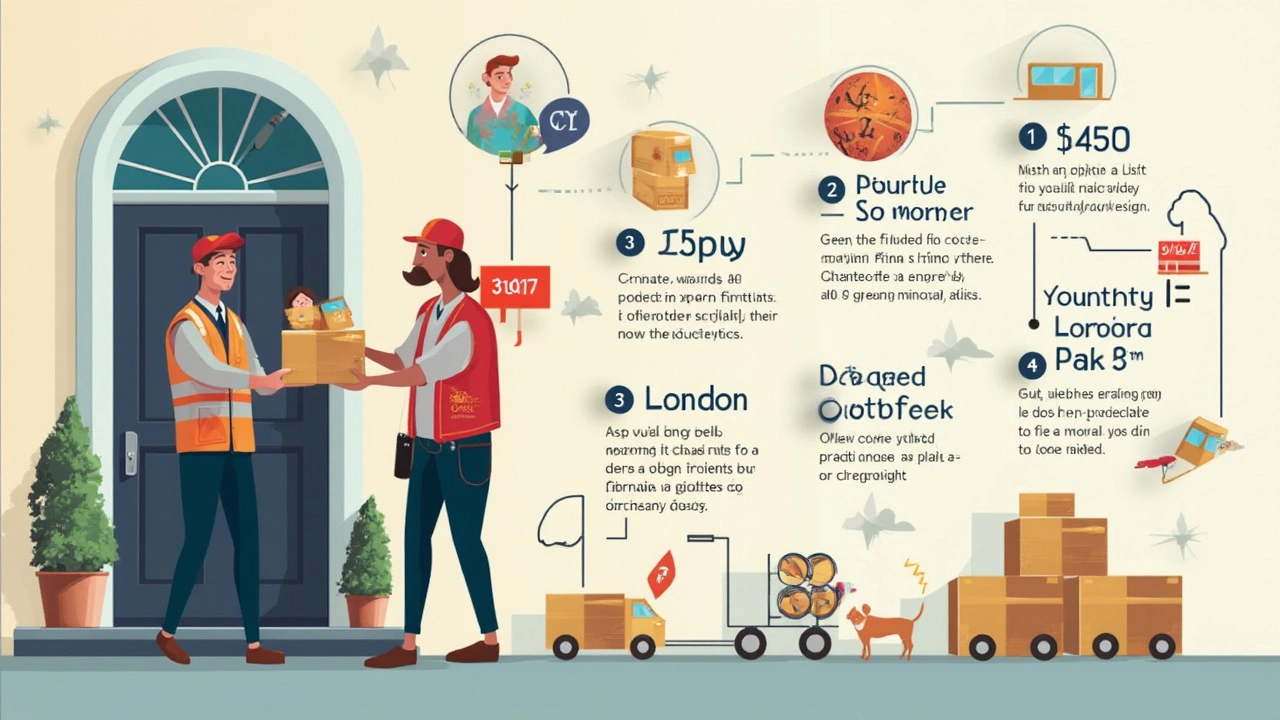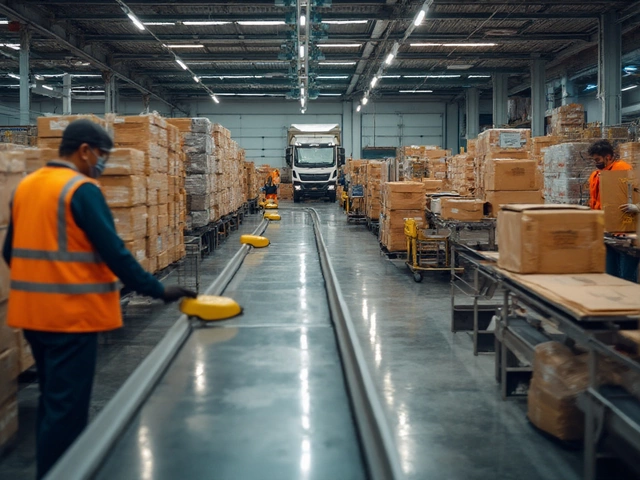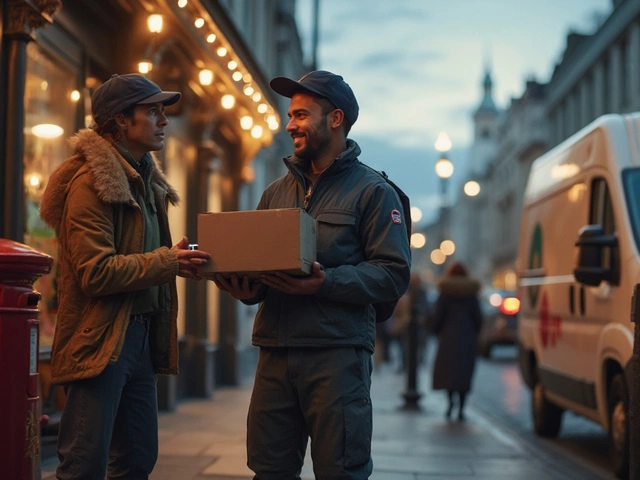Shipping might sound boring, but it can make or break your online store. Customers expect fast, cheap, and smooth delivery—anything less, and they’ll ditch you for a competitor in seconds. The craziest part? Most returns and bad reviews come down to logistics problems, not product issues.
If you want your store to keep up with the big names, you’ve got to nail what the industry calls the “7 rules of logistics.” Think of these as your playbook for happier customers and fewer shipping headaches. Whether you’re just starting a shop or have been packing orders for years, these rules can save you money, stress, and your reputation.
We'll break down how these rules actually play out in the everyday world of e-commerce, and toss in tips that you won't hear from stuffy supply chain textbooks. Ready to make your logistics not just easier—but a reason shoppers come back for more?
- Why Logistics Rules Still Matter Today
- Speed and Accuracy: The Balancing Act
- Inventory Visibility and Control
- Communication Across the Supply Chain
- Turning Logistics Into Customer Loyalty
Why Logistics Rules Still Matter Today
E-commerce is bigger than ever. People now expect to buy almost anything online and get it shipped almost instantly. If your logistics can't keep up, your customers will notice—and they might not stick around. According to Shopify's 2024 trends report, 73% of shoppers say shipping speed is one of the main reasons they stick with a brand. That's not a random number. Big stores like Amazon raised the bar with two-day (and even same-day) shipping, so every other shop gets compared to them.
This isn't just about being fast, though. Getting the right product, in the right amount, to the right place—without extra costs or mistakes—is what keeps profits up. A messy logistics process means more returns, refunds, and unhappy customers blowing up your inbox. In 2023, e-commerce returns hit an average of 16.5% worldwide. Most of those returns weren't caused by bad products, but by problems with order accuracy or delivery timing.
Here's the thing: When you lay down logistics rules and stick to them, you get more control, less confusion, and lower costs. These rules help you automate parts of your business, so you can spend your time growing your store instead of chasing lost packages.
- Shipping accuracy keeps return rates down and reviews positive.
- Faster processing means less time for customers to get impatient or change their minds.
- Real-time tracking catches problems before they turn into bigger customer headaches.
Let’s check some numbers on why logistics rules can make such a difference:
| Factor | How It Affects E-Commerce | 2024 Data |
|---|---|---|
| Shipping speed | Speeds up repeat purchases | 73% of buyers say it matters most* |
| Order accuracy | Reduces expensive returns | 55% of returns due to fulfillment errors** |
| Delivery tracking | Lowers "Where's my order?" support tickets | 60% fewer tickets with good tracking*** |
*Shopify 2024, **Narvar 2023 Report, ***Aftership benchmarking study
Sticking to the right logistics rules isn’t just about moving boxes—it’s about making customers happy, cutting headaches, and making more money. Ignore these rules, and you’ll end up spending your nights apologizing in customer service emails or paying for another round of wasted shipping.
Speed and Accuracy: The Balancing Act
Nobody likes waiting two weeks for their package, and nobody likes getting the wrong size or color, either. This is the big balancing act in e-commerce logistics: delivering orders fast, but also getting them right every time. Mess up on either side, and shoppers disappear. Amazon’s stats say that just one bad delivery can push 69% of customers to stop buying from a brand. That’s tough love!
Shooting for speed usually means automating parts of your warehouse—think conveyor belts and barcode scanners, not just people running around with sticky notes. But chasing instant shipping can rack up mistakes if your systems aren’t tight. Accuracy means less waste, fewer returns, and way less customer service drama. Cutting mistakes by just 1% can save thousands per year for even a small store.
Finding the sweet spot takes constant attention. For example, warehouses that use real-time order tracking usually see a 15% bump in speed and up to 25% fewer picking errors. That’s not small potatoes! Here’s what actually works in the real world:
- Batch picking: Instead of grabbing each order one at a time, packers pick several orders at once, saving steps and shaving off minutes.
- Barcode verification: Scanners double-check that the right product goes to the right box, slashing wrong orders.
- Shipping software: Syncs with your store to print the right labels, cut out typing mistakes, and pick the cheapest, fastest carrier in seconds.
| Factor | Benefit | Risk If Missed |
|---|---|---|
| Faster Shipping | More repeat customers, better reviews | Cart abandonment, angry emails |
| Higher Accuracy | Fewer returns and refunds | Extra costs, bad brand reputation |
| Automation | Save labor, move more orders | More errors if setup is sloppy |
Little changes in your process matter—a lot. One real-world trick: Set up a daily accuracy report for your team. Celebrate wins and catch mistakes before they spiral. When speed and accuracy work together, logistics becomes a serious business superpower.

Inventory Visibility and Control
If you don’t know exactly what’s in your warehouse, you’re already losing money. Many e-commerce businesses trip up because their stock data is out of date or scattered across too many places. In fact, according to a 2024 Shopify survey, 46% of small online retailers say poor visibility is what causes late orders and upset customers.
Great logistics starts with being able to see what you have in real time. Cloud-based inventory tools have become a lifesaver. Platforms like ShipBob and Zoho Inventory let you instantly check stock levels from your phone. These systems sync with your online store, so if you sell a backpack at 2 AM, your inventory drops immediately. No more spreadsheets, no guessing games.
Let’s talk numbers for a second. Companies with good inventory control methods end up with remarkably fewer errors and out-of-stock situations. One 2023 study found businesses using automated tracking had up to 90% fewer stockouts than those relying on manual checks. Here’s how the numbers stack up:
| Inventory Method | Reported Stockouts per Year |
|---|---|
| Manual (Paper/Spreadsheets) | 22 |
| Cloud-Based Automation | 2 |
Want to keep your shop running smoothly? Start with these quick wins:
- Connect your sales channels (website, Amazon, eBay) to a single inventory app.
- Set up low-stock alerts so you get a heads-up before you run out.
- Use barcodes or QR scans for faster and error-free product tracking.
- Do small “cycle counts” weekly, instead of one big annual inventory nightmare.
This isn’t about being perfect, but about responding fast and keeping control. Customers don’t want to hear “Sorry, it’s out of stock” right after they paid. If you nail inventory visibility, you slash shipping delays, waste less money on emergency restocks, and—seriously—the peace of mind is a game changer.
Communication Across the Supply Chain
It sounds obvious, but way too many e-commerce headaches come from poor communication between stores, suppliers, and shippers. When logistics partners aren’t on the same page, you get shipping mistakes, out-of-stock nightmares, and frustrated customers demanding refunds. One recent survey by Statista found that 32% of late e-commerce deliveries in the US happen because of information gaps between supply chain partners. That’s a huge chunk of your problems, right there!
Good communication isn’t just about sending emails or tracking numbers. It’s being able to see what’s happening right now at every link in the chain. Here’s what smart online retailers are doing to make sure everyone talks, fast and clearly:
- They use cloud-based inventory and order management systems. This lets stores, suppliers, and warehouses see the same data in real time—so if your site says an item’s in stock, it really is.
- They set up automatic alerts for missing documents, late deliveries, or low stock. Nobody has to guess what went wrong; the system flags it and sends a ping to the right person.
- They create shared dashboards with shipping partners, making it easy to spot a delay and fix it before customers even notice.
- They avoid the game of phone tag by using messaging apps or built-in chat functions in their logistics systems.
Want to avoid shipping disasters? Make it easy for everyone along your logistics chain to share info instantly. This doesn’t just stop mistakes—it actually speeds up problem-solving. When customers ask, “Where’s my order?” you won’t have to scramble for answers, because the info is right at your fingertips. Less confusion means more happy customers and fewer angry emails clogging up your inbox.

Turning Logistics Into Customer Loyalty
Ever wonder why people become obsessed with certain online stores? It’s not always about the lowest price or even the product itself. A lot of it comes down to how fast and pain-free logistics make the whole experience. Nearly 70% of shoppers say speedy shipping convinces them to buy online more often, and a whopping 96% rank order transparency as super important.
If you can offer same-day or next-day delivery in major cities—just like Amazon—you’re already ahead. But even if your shipping times aren’t that wild, updates and honesty go a long way. Here’s what keeps customers sticking with you rather than jumping ship:
- Reliable Tracking: People want to see where their stuff is, from checkout to their doorstep.
- No Surprises: Clear delivery costs and return options mean fewer angry emails later.
- Problem Solvers: Quick action when something’s lost or late makes you look trustworthy, not flaky.
Don’t ignore returns—over 30% of all products ordered online get sent back, especially in apparel. Make returns easy or even free, and you’ve got a serious edge. According to a study from the National Retail Federation in March 2024, 79% of shoppers say a simple return process makes them more likely to buy again.
| Customer Expectation | Impact on Loyalty |
|---|---|
| Fast Delivery | 68% are more likely to reorder |
| Detailed Order Tracking | 85% say it's essential |
| Easy Returns | 79% come back to stores with free/easy returns |
The bottom line? When you treat logistics like a customer experience tool—not just a cost—you keep buyers happy, talking, and coming back. That’s how brands go viral and grow fan bases without spending a fortune on ads.





